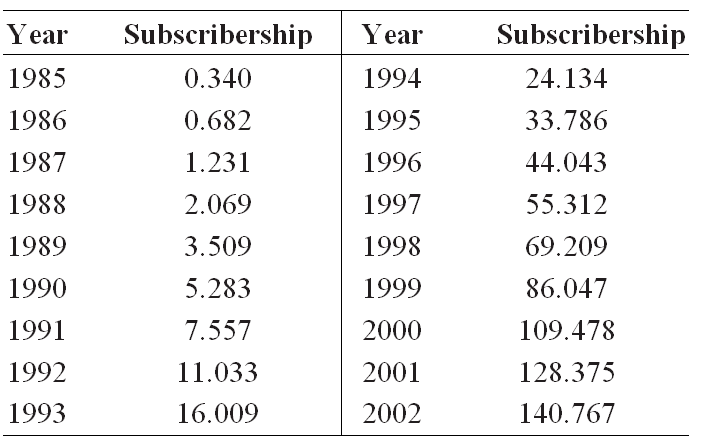Multiple Choice
The following table shows the numbers of U.S. cellular subscriberships (in millions) from 1985 to 2002. 
Source: The CTIA Semi-Annual Wireless Industry Survey
Assume that the number of U.S. cellular subscriberships, in millions, can be modeled by the function  , where t is the number of years past 1980. Find the function that models the instantaneous rate of change of the U.S. cellular subscriberships.
, where t is the number of years past 1980. Find the function that models the instantaneous rate of change of the U.S. cellular subscriberships.
A) 
B) 
C) 
D) 
E) 
Correct Answer:

Verified
Correct Answer:
Verified
Q170: Use analytic methods to evaluate the limit
Q171: The graph of a company's profit function
Q172: Suppose that the revenue (in dollars) from
Q173: Use properties of limits and algebraic methods
Q174: Because the derivative of a function represents
Q176: For the given function, find the slope
Q177: Find the derivative of the given function.
Q178: Complete the table and use it to
Q179: A graph of <img src="https://d2lvgg3v3hfg70.cloudfront.net/TB4005/.jpg" alt="A graph
Q180: Find the third derivative. <img src="https://d2lvgg3v3hfg70.cloudfront.net/TB4005/.jpg"